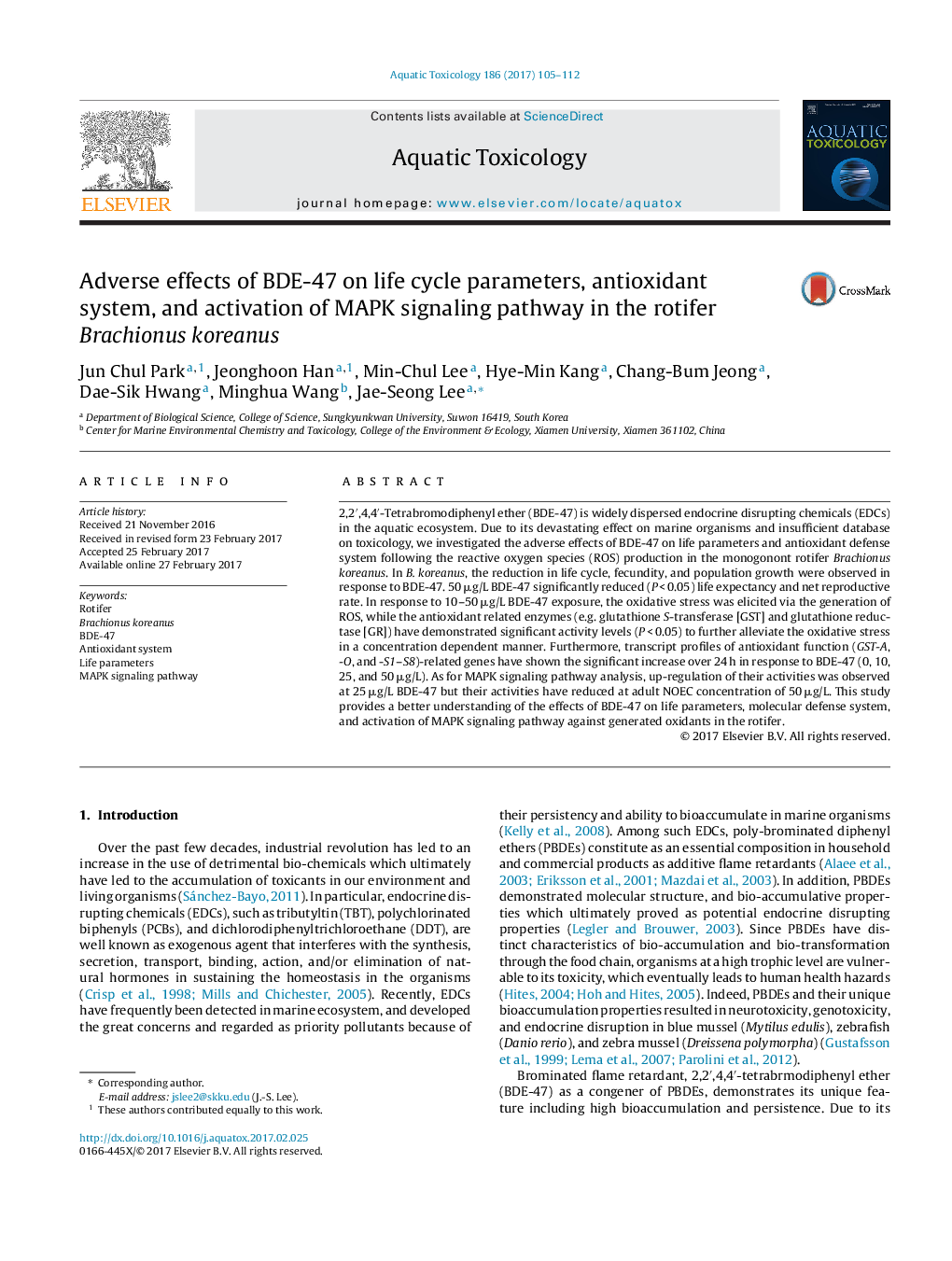| Article ID | Journal | Published Year | Pages | File Type |
|---|---|---|---|---|
| 5764319 | Aquatic Toxicology | 2017 | 8 Pages |
Abstract
2,2â²,4,4â²-Tetrabromodiphenyl ether (BDE-47) is widely dispersed endocrine disrupting chemicals (EDCs) in the aquatic ecosystem. Due to its devastating effect on marine organisms and insufficient database on toxicology, we investigated the adverse effects of BDE-47 on life parameters and antioxidant defense system following the reactive oxygen species (ROS) production in the monogonont rotifer Brachionus koreanus. In B. koreanus, the reduction in life cycle, fecundity, and population growth were observed in response to BDE-47. 50 μg/L BDE-47 significantly reduced (P < 0.05) life expectancy and net reproductive rate. In response to 10-50 μg/L BDE-47 exposure, the oxidative stress was elicited via the generation of ROS, while the antioxidant related enzymes (e.g. glutathione S-transferase [GST] and glutathione reductase [GR]) have demonstrated significant activity levels (P < 0.05) to further alleviate the oxidative stress in a concentration dependent manner. Furthermore, transcript profiles of antioxidant function (GST-A, -O, and -S1-S8)-related genes have shown the significant increase over 24 h in response to BDE-47 (0, 10, 25, and 50 μg/L). As for MAPK signaling pathway analysis, up-regulation of their activities was observed at 25 μg/L BDE-47 but their activities have reduced at adult NOEC concentration of 50 μg/L. This study provides a better understanding of the effects of BDE-47 on life parameters, molecular defense system, and activation of MAPK signaling pathway against generated oxidants in the rotifer.
Related Topics
Life Sciences
Agricultural and Biological Sciences
Aquatic Science
Authors
Jun Chul Park, Jeonghoon Han, Min-Chul Lee, Hye-Min Kang, Chang-Bum Jeong, Dae-Sik Hwang, Minghua Wang, Jae-Seong Lee,
